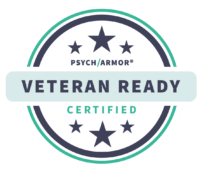Why We’re Concerned About the Fentanyl Epidemic
In January 2024, the New Jersey Office of the Chief State Medical Examiner reported that more than 2,500 people died of suspected drug overdoses in 2023—most within Atlantic, Camden, Essex, and Hudson counties—and many from fentanyl after a previous period of decline. While statistics change frequently, there are numerous reasons to be concerned about the fentanyl epidemic in New Jersey and throughout the United States—which is why awareness and specialized treatment are more important now than ever.
Understanding Fentanyl Epidemic Statistics
The Centers for Disease Control and Prevention (CDC) explains that pharmaceutical fentanyl, a synthetic opioid, is a method for treating severe pain, as it’s “50–100 times more potent than morphine.” However, while medication is often misused and abused, the more prominent fentanyl threat is from illegally made drugs—which are especially deadly when combined with heroin and/or cocaine, the veterinary tranquilizer xylazine, and other toxic substances.
Additionally, even though there’s been a nationwide crackdown on generalized opioids, deaths continue to rise significantly because other illicit drugs are laced with fentanyl. The Camden County Health Department reports that the product is often cheaper to produce and invisible to the naked eye, so dealers cut other substances with it to increase potency and profits. “Fentanyl can cause an overdose at just 2–3 milligrams, leading to numerous deaths of first-time triers/buyers and casual users,” the agency states. That amount is roughly the tip of a pencil.
In 2023, the United States Drug Enforcement Administration reported that “laboratory testing indicates 7 out of every 10 pills seized by DEA contain a lethal dose of fentanyl.” Last year, the agency seized more than 75 million fentanyl pills (compared to 58 million in 2022) and over 11,500 pounds of fentanyl powder.
In July 2023, the New Jersey governor’s office declared July 14th as “Fentanyl Poisoning Awareness Day” as a bipartisan effort to “prevent overdoses and combat the effects of the opioid crisis on our communities. This resolution aims to help raise awareness about the dangers of fentanyl and honor the lives lost to this substance.”
This official statement further noted that fentanyl “was involved in nearly 75 percent of drug overdose-related deaths in New Jersey in 2019—a drastic increase from its involvement in less than 4 percent of drug-related deaths just seven years prior. This reflects a national trend of increased fentanyl-related deaths as well as overall opioid-related overdose deaths.”
According to the state chief medical examiner’s office, here are some of the most recent numbers regarding New Jersey citizens dying of suspected drug overdoses in 2023:
By race:
- White: 1,285
- Black: 746
- Hispanic: 425
- Not recorded/other/unknown: 109
By identifying gender:
- Male: 1,836
- Female: 712
- Gender not recorded: 15
By age:
- 20–24: 88
- 35–44: 600
- 45–54: 543
- 55–64: 609
- 65–74: 187
- All others: 80
Fentanyl Addiction Risks
Fentanyl binds to opioid receptors in the brain and spinal cord, which reduces the perception of pain and produces feelings of euphoria and relaxation. Because of its high level of potency, even a small amount of fentanyl can have a significant effect.
The drug is considered dangerous for several other reasons:
- Rapid onset and short duration. While fentanyl takes effect quickly, it also wears off soon. This prompts a vicious cycle of repeated dosing, increasing the risk of fentanyl addiction or death.
- Tolerance and dependence. Prolonged use of fentanyl, even under medical supervision, can lead to tolerance (needing higher doses to achieve the same effect) and physical dependence (experiencing withdrawal symptoms if use is stopped abruptly).
- Narrow therapeutic window. This refers to the range of doses between the amount that provides therapeutic effects and the amount that causes toxicity. Tragically, there’s a fine line between a therapeutic fentanyl dose and a lethal one.
- Easy to accidentally overdose. Even for individuals trying to use fentanyl safely, it can be easy to inadvertently take too much due to its potency and the difficulty of accurately measuring such small doses.
- Difficult to reverse overdose. While other opioid overdoses can often be reversed with naloxone (Narcan), due to fentanyl’s potency, higher doses of naloxone or multiple administrations may be required to counteract its effects, making it more challenging to save a person’s life. However, certain products, such as xylazine, don’t respond to naloxone, so consequences are dire for someone who unknowingly consumed fentanyl mixed with this tranquilizer.
Many people hesitate to seek out addiction treatment because they fear the detoxification process. But with the proper medical and psychological guidance—also known as withdrawal management—you can move through a safe detox process and into a phase of true healing.
Rely on Focused Addiction Treatment at Seabrook
Seabrook has four award-winning addiction treatment centers in New Jersey. Our clients come from near and far to receive effective treatment for fentanyl addiction, as well as other substances and alcohol. Our board-certified professionals treat addiction as a brain disease and know how to partner with individuals who have used almost all combinations and amounts of mood-altering chemicals, including alcohol, prescription drugs, street drugs, and others. We also help treat mental health and mood disorders.
Depending on the level of addiction, the first stage of fentanyl treatment might be medically supervised detoxification. Then, a continuum of care plan—customized to fit each individual’s specific needs—may feature various methods to create a path to recovery. If you or a loved one recognize there’s a problem, call us today to learn how we can help you avoid becoming a statistic.




